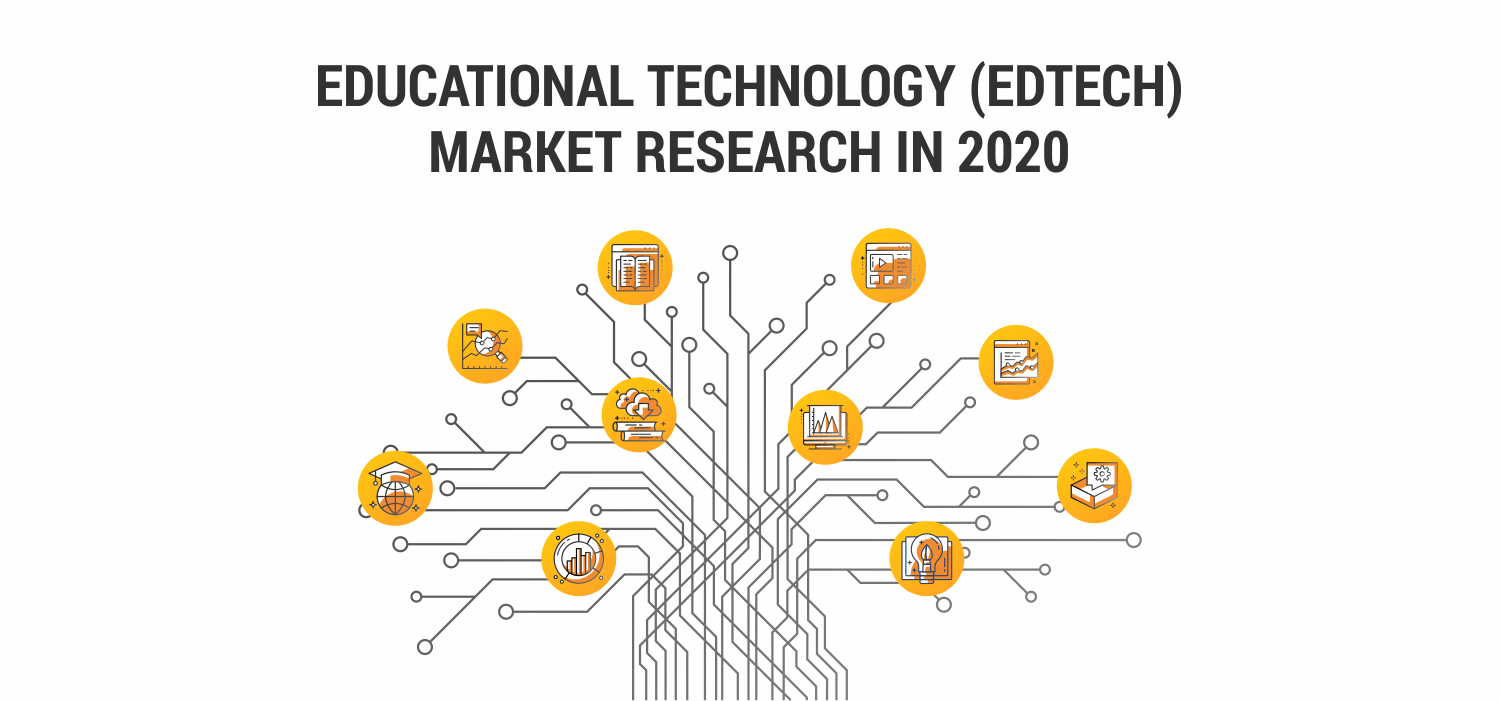The education technology solutions have become one of the hottest topics of discussion among parents and educators around the world. Even before the COVID-19 pandemic, the EdTech market was about to flourish due to its convenience and effectiveness. However, global pandemic makes us think more about the future of education and technology and adapt more quickly to “the new normal” in education. The current situation makes us ask ourselves is there a time to shift towards digital learning completely? Are we ready for these changes? And what prospects it will bring to the educational software market?
Working with over 50+ EdTech startups, our aim was to show recent changes in the EdTech market. We were operating with loads of data consisting of market analysis and competitors' research to show the recent EdTech market overview.
What is EdTech?
Education Technology (the short form is EdTech) could be applied to the area of technology dedicated to the development of digital tools intended to enrich the educational experience and improve educational methods.
What is the purpose of education technology? The EdTech aims to revolutionize the traditional approach to learning and make it in accordance with contemporary needs. Since different students have different abilities and interests, digital learning proposes a method of customizing the curriculum by introducing new content at a pace that would be more natural for students.
You can define several types of educational technologies, such as:
Synchronous and Asynchronous. Synchronous learning happens in real-time when all students participate and interact at the same time. On the other hand, asynchronous learning is a self-paced practice that allows students to engage in digital learning without the dependency of other students’ participation.
Linear Learning. This is a typical method of teaching. We all do linear learning while reading the online book, article or manual. This type is a good alternative to printed materials, therefore it might be more sustainable for the environment. Additionally, rich media (audio and video materials) can be easily used to significantly improve the learning experience.
Collaborative Learning. This type uses a variety of methods with the focus to encourage students to work together on learning tasks. Using new educational technologies in the classroom allows students and teachers to work collaboratively, discuss ideas, and promote information.
EdTech has already had a huge effect on education. With the development of advanced technologies, the boundaries of educational methodology have been expanded. It is fair to say that educational and technological advances are combined together with a new revolutionary landscape in the traditional market of educational possibilities. EdTech not only allows educational institutions to serve a larger and more diverse audience but also enables both teachers and students, to foster relationships in an interactive fashion.
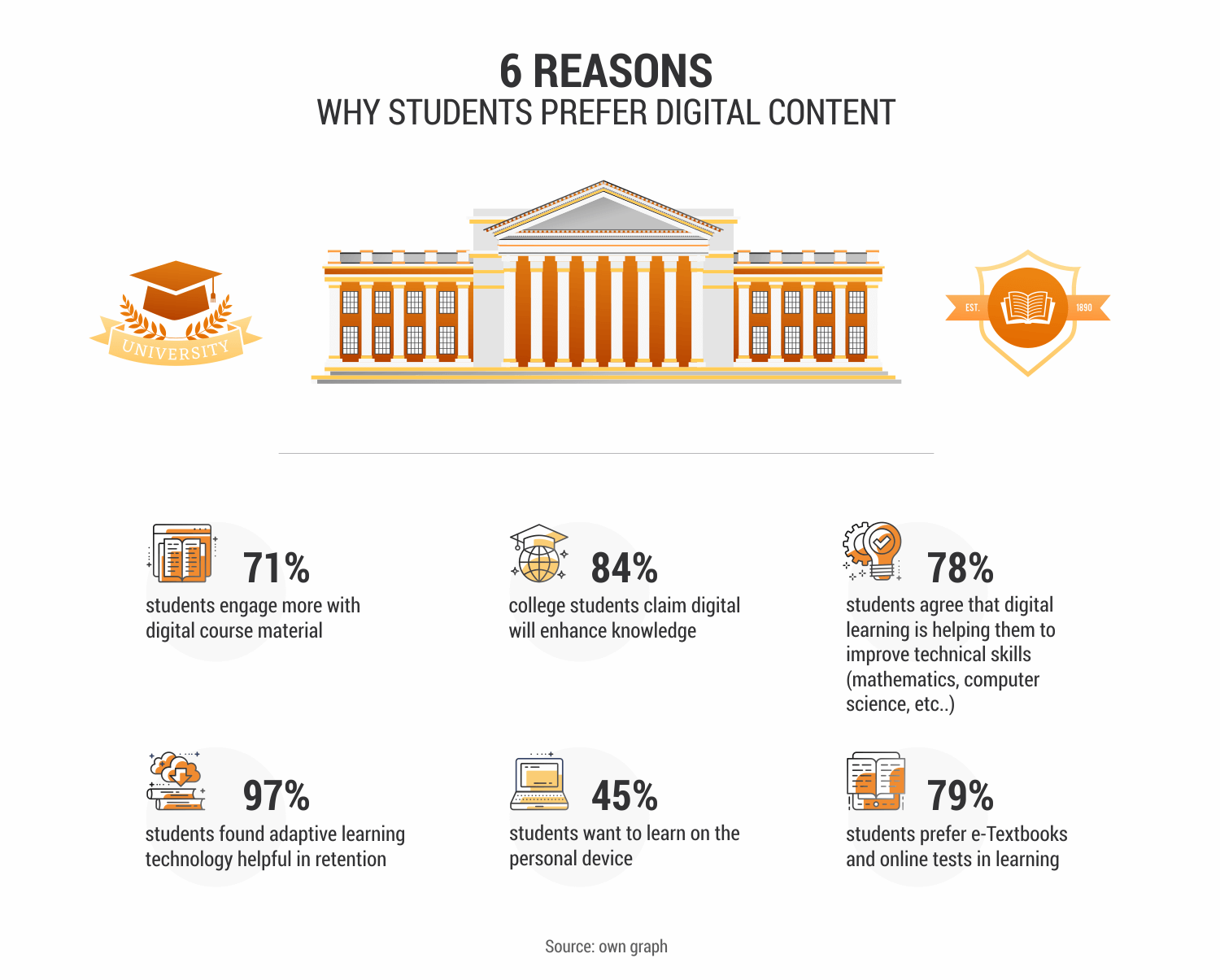
Why is EdTech Important?
The main goal of EdTech is not to substitute the current practices, but rather simply change the approach of educational delivery. We are not talking about changing the education material from books to digital form. Hence, it’s a much more deep integration of innovative solutions to the education system by improving the pedagogy and learning process.
Therefore, there are only a few of the benefits that digital learning platforms can bring to the age-old education process:
Build strong student engagement by using all the necessary multimedia for more convenience;
Students, parents, and teachers can easily track the progress of learning;
Students have the ability to collaborate with other students, teachers or influencers, consequently gaining the practical experience;
Input to sustainable development, since there are no paper books so EdTech doesn't affect the deforestation;
Everyone can improve their digital literacy.
Every year more and more corporations adopt EdTech while a lot of entrepreneurs start their small businesses using education technology. Since most people acknowledge the existing benefits of EdTech for the present and future students, it’s not a surprise that the global EdTech market growth will reach $40.9 billion by 2022.
As we continue to move forward, it is clear that digitization of education is becoming more of a significant factor in the educational sector. We truly can be optimistic about the future of education since there are hundreds of thousands of options out there following the top educational technology trends. Cloud computing, virtual and augmented learning experience, 3D printing are all available nowadays and are increasing exponentially every year while creating a custom learning experience for every student.
State of Education Technology in 2020
Due to the Coronavirus outbreak, a number of schools and universities had to temporarily close to containing the spread of the virus. As for 27 July, 2020 around 1,725 billion students were affected due to the school closure in response to the virus. According to the UNICEF monitoring, 106 countries are currently implementing nationwide closure and 55 are implementing local closures, impacting around 98 percent of the world’s student population.
As a solution to distance learning, a lot of students enrolled in online courses to enforce distance learning. Internet technology has enabled various forms of distance learning through open educational resources and facilities such as e-learning and MOOC’s.
Among the different types of educational technology there are:
Educational technology software
Social media technology
Audio and visual technology
Virtual classrooms
Whiteboards
Mobile technology, computers and tablets
Global EdTech Market Potential
So, how big is the EdTech market? In fact, the global EdTech market size is forecasted to grow at 5.08 percent CAGR by 2022 making the total worth a whopping $243 billion. Observing this massive growth even the investors are lured to fund education startups while more and more entrepreneurs are eager to develop EdTech startup.
Educational technology is moving fast, and some level of digital adoption and tech solutions are required to be implemented now. However, not all EdTech companies stick to the smart plan of adopting innovative technologies. Some of the companies choose to stick with “tried and true” technologies and subsequently risk to be left in the dust as other, more forward-looking companies develop new, more engaging teaching and assessment tools.
By the same time, living in the swirl of endless opportunities, modern solutions, and advanced technologies, it’s important to navigate the process of new product development. So, companies that leap into new educational technologies without thoroughly understanding market potential and limitations may run into serious problems as their products fail to deliver educational value. In this case, the first thing to do is market research. Consequently, it will help in framing your product/market fit and overall business strategy to become a leader in the specific market niche.
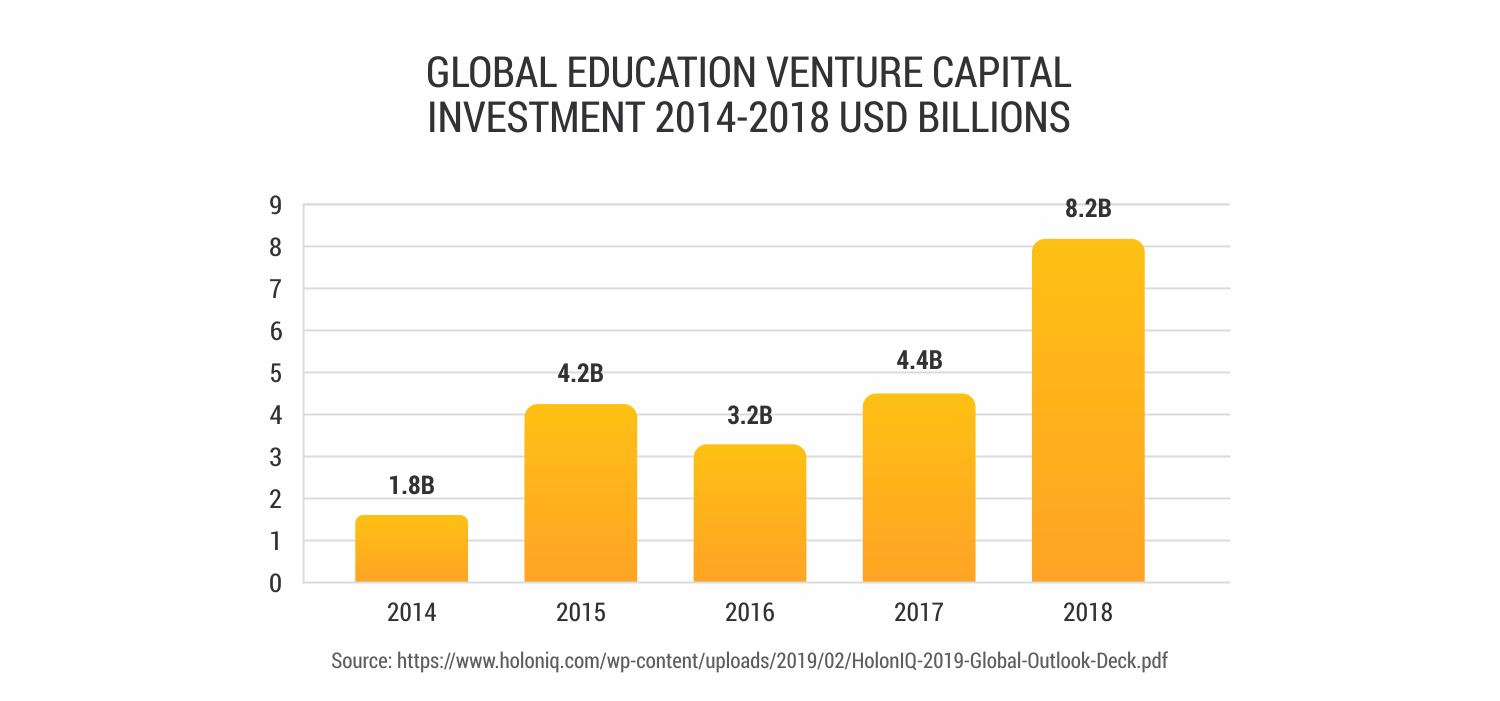
The global education statistics in 2017 reached skyrocketing $4.5 billion funding 813 EdTech companies. As you can see invest in EdTech exponentially increase with each year. There was a steady increase in global education venture capital investment over several years. However, in 2018 EdTech shattered its previous records with $8.2 billion in investment in the first half itself, funding a total of 437 companies.
Such a jump could be explained that today’s digitally connected generation of students strives to get a unique way of delivering learning practice. That is why multimedia and interactive course content are predominant features of every digital learning platform.
Global investments in EdTech set records in 2020. Amid the COVID-19 pandemic, education has moved online and turned more digital, causing a sharp increase in demand for the educational technology market. At the same time, the number of investors willing to pour money into the EdTech industry has grown.
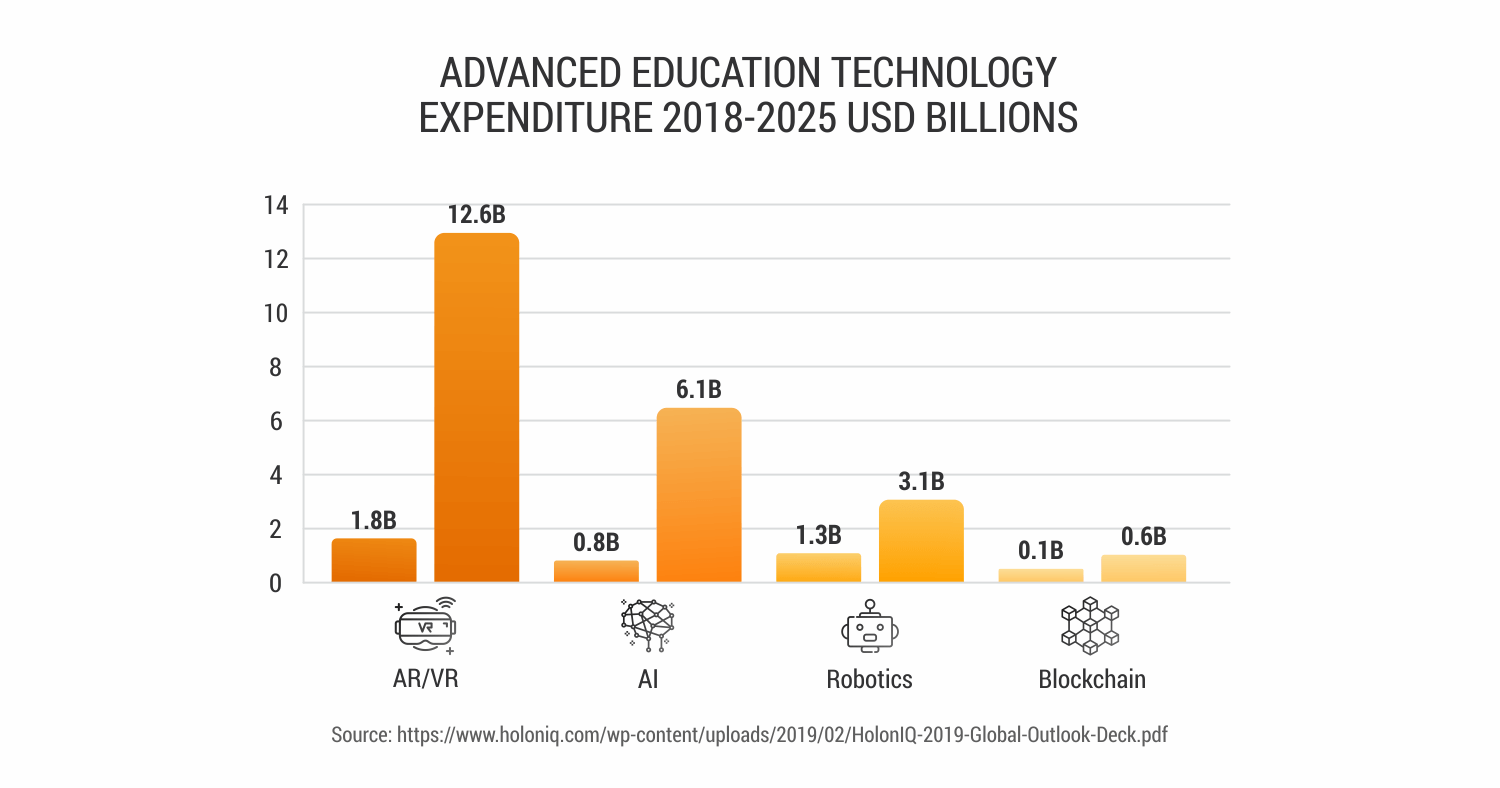
The market snapshot of the advanced education technology suggests that it will begin to hit the strides by 2025 with AR/VR and Artificial Intelligence becoming increasingly integrated into core education delivery and learning processes. It’s most likely that such a process will begin in the corporate and non-accredited sectors.

At the same time, digital spending is changing fast. Comparing the two years (2018 and 2025) the growing percentage of digital spending is vivid. In 2018, education spent $142 billion on digital technologies. It is suggested that spending on digital education technology will reach $342 billion by 2025.
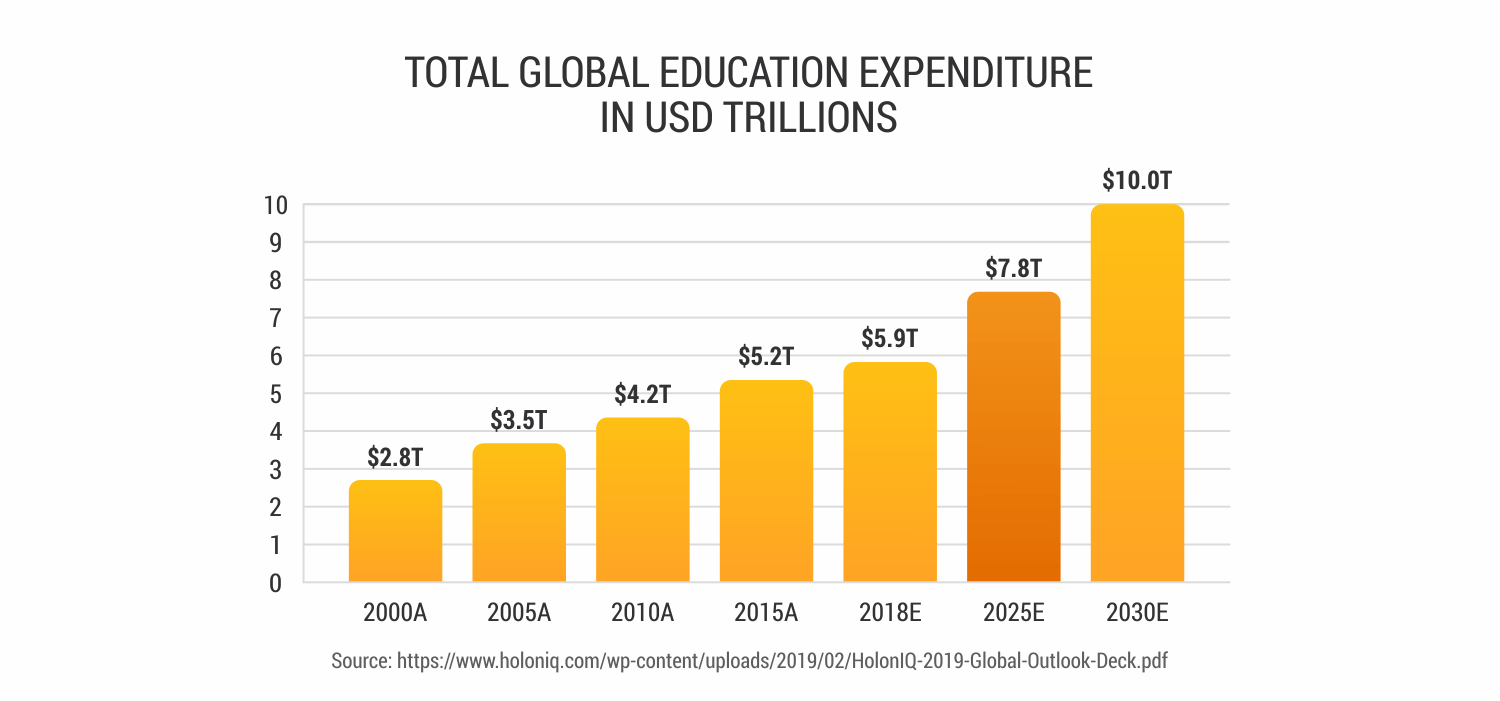
The global education technology industry analysis shows that market share crossed $17.7 billion in revenue in 2017 and is expected to grow to $40.9 billion by 2022, at a Compound Annual Growth Rate (CAGR) of 18.3%.
In fact, the education technology market growth is described by seismic shifts in technological demands and innovation, a movement toward the incorporation of the top trends like virtual reality and AI and user-centric product development strategy.
The education industry is experiencing dramatic changes regarding the delivery of its products and services. The advancements in technology and innovations are transforming the market scenario and motivate the need for cost-effective customer services. There is an increasing need for the implementation of technological innovations in the educational processes and data to enable better decision plans, greater responsiveness to customer demands, improved product design and quality, and faster turnaround times.
How Does the Education Industry Benefit From Technology?
Democratizing Education. One of the most noteworthy benefits of EdTech is that it democratizes education. Since the dawn of time, access to a good education was granted to royalties or an upper class of society. Since then, there have been a lot of efforts to make a high quality of education available to everyone. Nevertheless, still, wealth and geographical location play a crucial role in approaching education. For example, schools in rural areas have an inferior education system compared to the well-funded ones in the urban area.
EdTech holds the potential to change this. With education technology, a high standard of education can be catered everywhere. And even the digital learning platforms and mobile learning apps can provide certified courses from reputed universities. Therefore, the schools from underdeveloped regions can have the same access to the educational content as children from developed countries.
Cost Reduction. According to US Bureau of Labor Statistics, the cost of textbooks rose by 88 percent between 2006 and 2016, which is way more compared to an increase in tuition fees and housing cost, i.e. 63 percent and 50 percent respectively. A survey by one of the EdTech firms, Cengage, revealed that a student in the US spends approximately $1,200 annually on textbooks. The same survey also stressed that 43 percent of students have skipped meals and 31 percent registered for fewer classes to save money for the books.
The perfect solution to bring down the cost is to use digital course materials. These digital resources will save costs on publishing, allow far-reaching distribution among learners and are easy to update and revise. Technology can play a major role in modifying the cost of education, whether it be the cost of delivering education or the cost of building the school or colleges itself.
EdTech has also enabled students to attend the digital classroom remotely as many colleges have adopted eLearning. This further reduces the cost of the commute for the students and even space for the colleges.
Continuous Learning Process. We tend to think that learning is something to be left behind after graduation from school or university. In fact, learning is a lifelong process for personal and career endeavors. The highly competitive job market suggests a continuous improvement of the existing knowledge and obtaining a new set of skills to keep you up with the latest trends and peculiarities of the industry you are working at.
And technological trends in education are making this concept of learning possible. EdTech is at your disposal since digital education and precisely the digital learning platforms can positively affect your time management while saving a lot of time and money.
Top EdTech Companies Now
Udemy
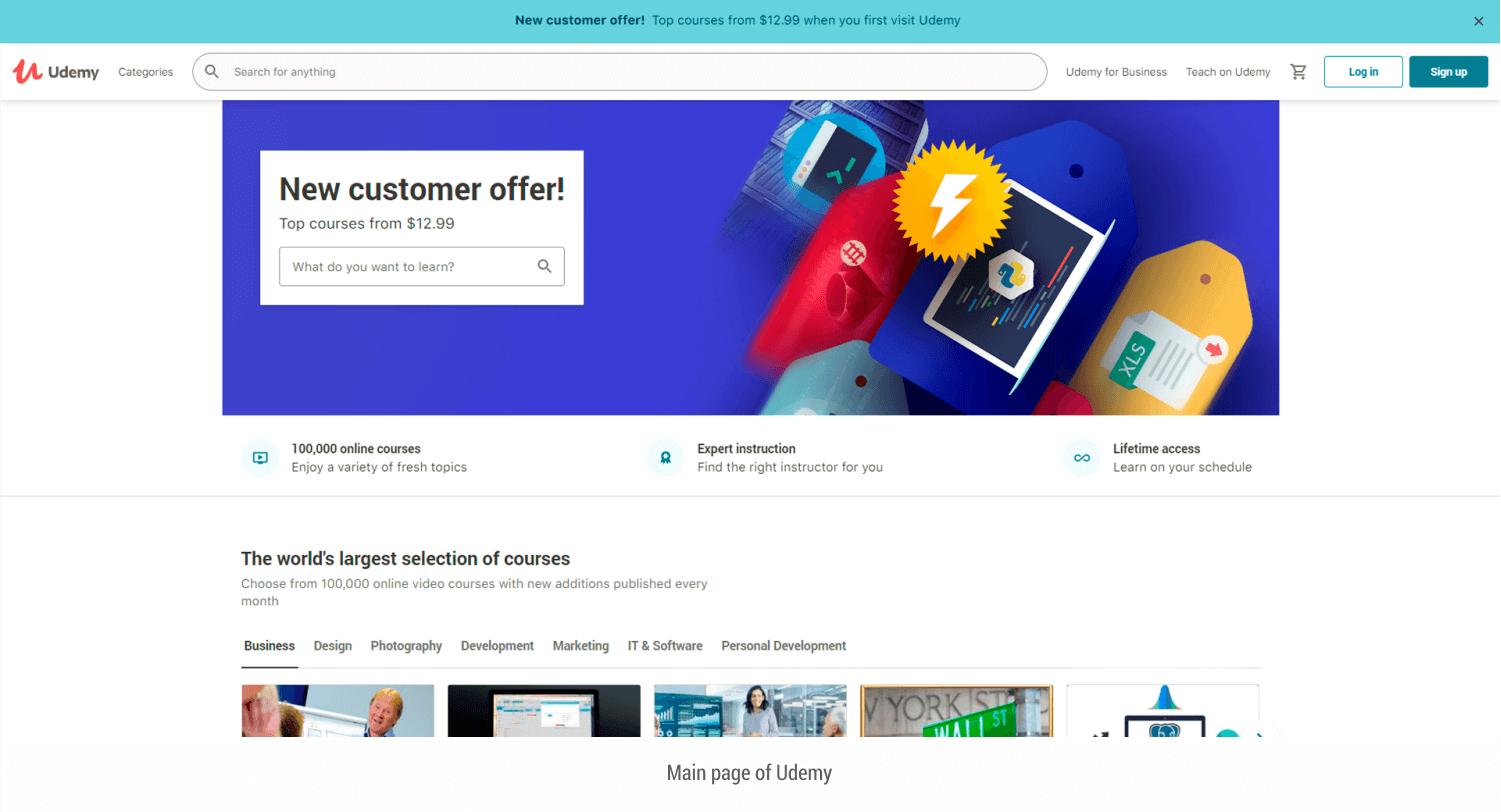
Udemy is the online learning marketplace with over 100,000 courses covering all sorts of subjects and specializations. Programming, marketing, data science and analytics and many other courses available online.
Coursera

Coursera is one of the biggest educational technology companies that with the collaboration eight he top universities produce a wide range of courses. The platform along with the collaboration of the top universities in the world worked together to create online courses on a variety of platforms and guarantee the certificate of completion after the finish of the course.
InkTank Academy
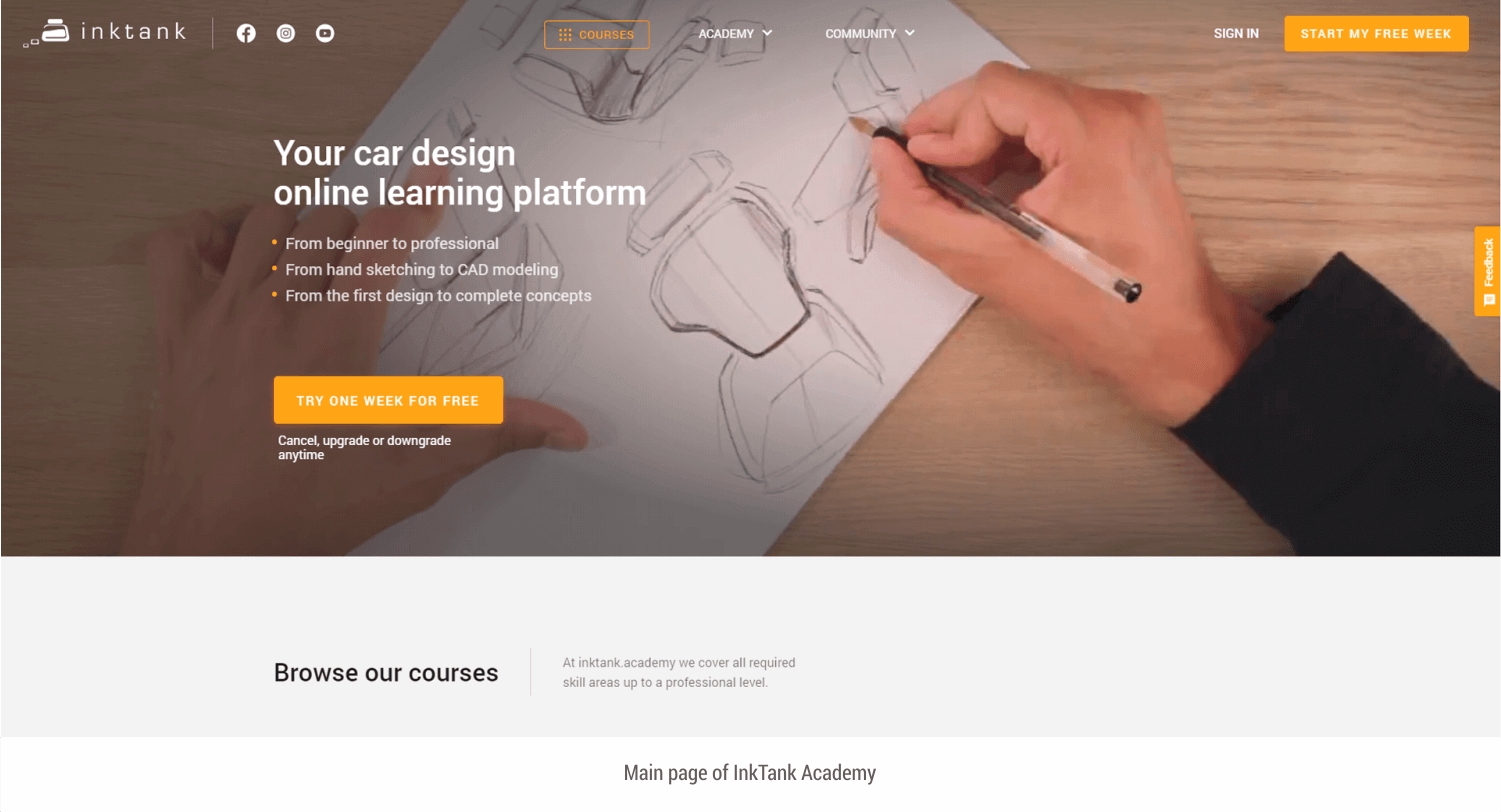
The education technology industry is focusing on solving different challenges in education. For example, EdTech allows you to obtain skills in non-traditional and creative spheres - like a car designer. In that case, the digital classroom contains all the necessary multimedia tools for effective digital learning. One such example is InkTank Academy - a digital learning platform for everyone who is eager to learn how to design a car.
Udacity
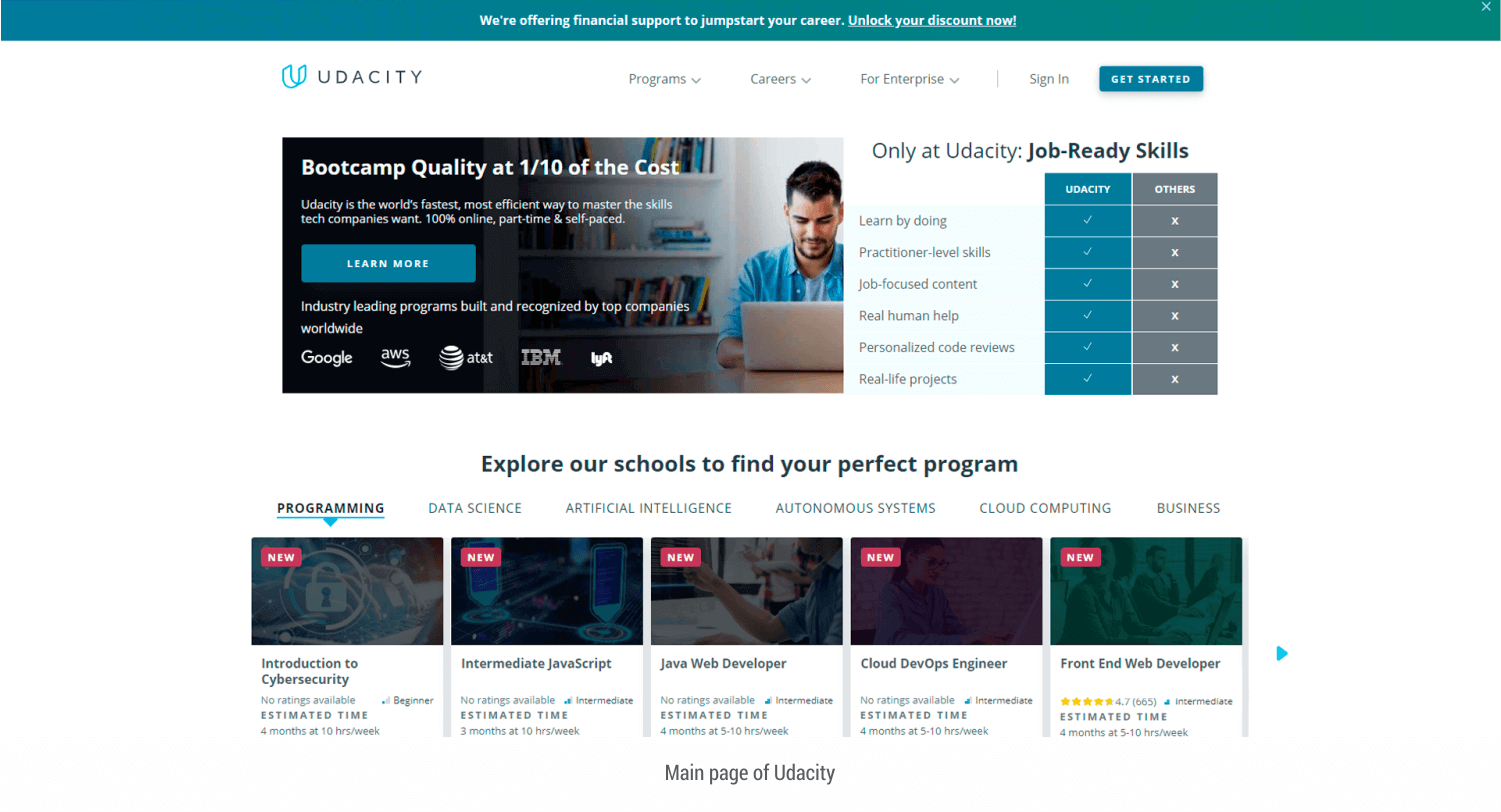
Living in the world where computer knowledge is a must-have, Udacity Living in a world where computer knowledge is a must-have, Udacity is a top choice for everyone who wants to gain practical knowledge in computer science. There is a wide range of free and university credit courses on design, programming, digital marketing.
Duolingo
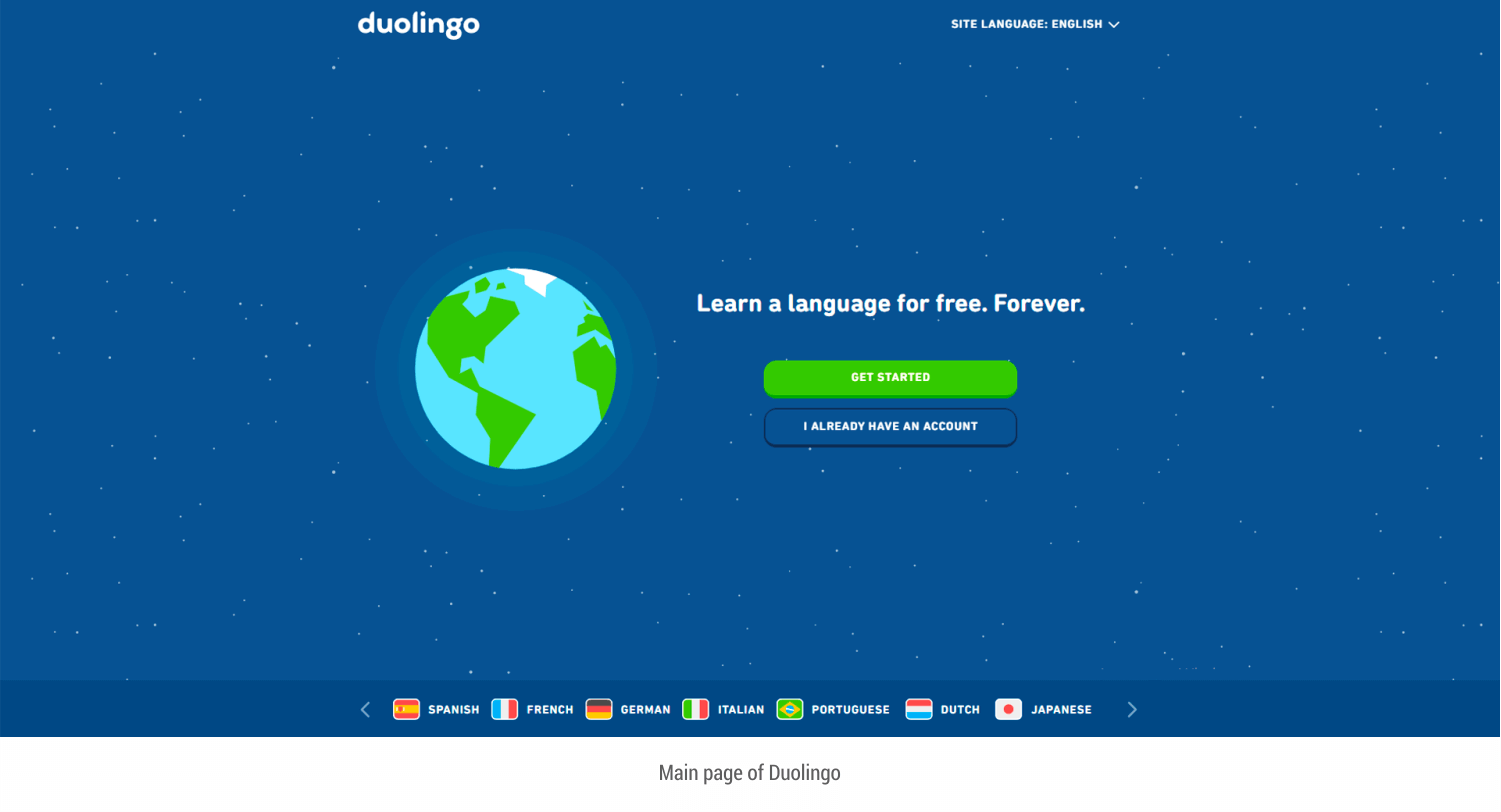
Duolingo Duolingo is a platform where everyone can learn and practice the new foreign language. The element of gamification is allowed to achieve the maximum results within a tight schedule.
Conclusion
The education technology industry is growing exponentially every year. Thus, the market prospects are suggested to reach $40.9 billion by 2022. It’s not a surprise since new educational technologies were meant to introduce innovative solutions in the traditional notion of education.
So, what is digital learning? First of all, it’s an equivalent of innovation and convenience. So the students can attend so-called “digital schools” to benefit from the concept of continuous learning in order to improve the existing knowledge and gain new skills for your career or hobby.
Moreover, from reducing costs to democratizing education, EdTech allows you to get skills in a wide range of creative specializations. A digital class includes all the necessary media tools to help you to become a specialist in different areas. Starting from a product design sketches that create car aesthetic design to learning a new coding language so you can create your very first mobile application - you can learn a new skill easily with the digital learning platform.
Share this article with others, for there’s a good chance that someone will benefit from the information above.
